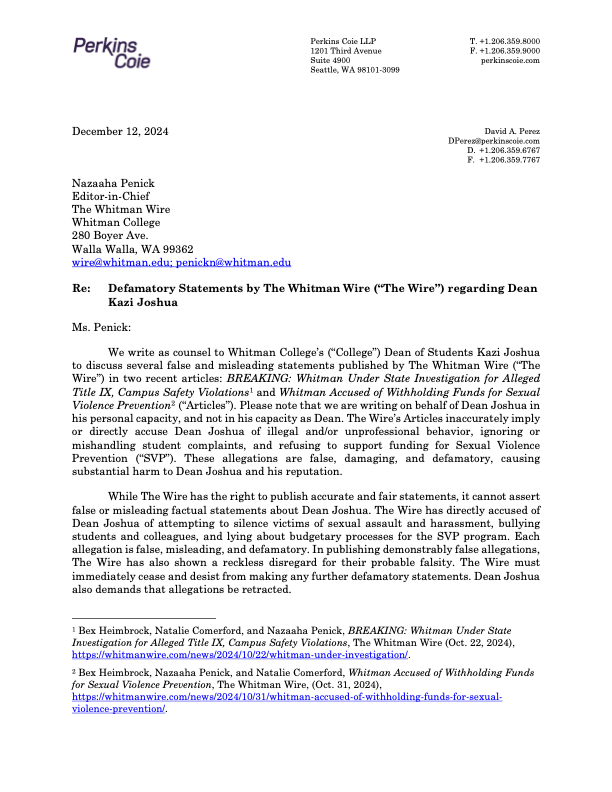Celebrating its sixth year of operation and growth, the Pacific Northwest’s Stateline Wind Energy Center finds itself prominent among the success stories included in this year’s U.S. Department of Energy report on U.S. Wind Power Installation, Cost and Performance Trends. 
The report, prepared annually, provides an incisive look at U.S. wind power development and how it compares to the wind projects of other nations. This year’s report offers an encouraging view of progress in spite of increasing costs of transmission and installation. Cumulative U.S. wind power capacity is up 27 percent since 2005, a development that places the U.S. third in a ranking of global capacities, behind Germany and Spain. Specifically citing the increasing capacity of Texas, California and Washington, the report ambitiously speculates the potential for the wind power to achieve 15-20 percent of the nation’s power generation.
Washington is in a uniquely fortunate position to expand and rely upon sustainable energy and, as the report states, is exemplary in its development of both hydroelectric and wind power generation. It is now rare to drive the Oregon-Washington Highway without seeing oversized trucks laden with pieces of the new 166-foot turbines or their 76-foot blades. The new windmills are headed either to the Stateline or Vansycle Wind Projects where they will be strategically placed to harness fearsomely variable winds.
With nearly 500 turbines stretched along the Vansycle Ridge and up to Pasco, Stateline’s generating capacity is easily the highest in the northwest, and in its first year of operation, the wind farm stood as the largest in the world. The turbines on the ridge catch 16 to 18 mph winds from the Columbia Gorge and generally deliver an impressive 40 percent of peak capacity year-round. Today, the peak output exceeds 300 megawatts and the farm reliably powers 70,000 homes. Winds from the gorge are usually at optimum speed, but the turbines can also operate at wind speeds of seven to 56 mph.
Beefing up American wind capacity has been a recent and rapid process. Beginning with 1,000 MW in the first California wind farms in 1980s, wind power didn’t reach 2,000 MW until 1999, since then wind capacity has been increased five-fold. Turbine providers, like the Clipper Turbine Works plant in Cedar Rapids, Iowa, struggle happily to keep up with demand. Plant manager Bob Loyd told a local newspaper that orders were coming in as fast as people were being hired. If orders for a Clipper 2.5 megawatt turbine were put in today, it could be two years before the turbine was built, delivered and fully operational. Such impediments do not seem to deter many communities interested in diversifying energy resources.
Wind power has become an attractive supplementary resource for consumers faced with rising costs of natural gas, pollution and resource depletion. Besides the obvious benefits of an environmentally sound, sustainable energy, the wind farm’s economic impact is similarly inviting. The project provides jobs for the building, operation and maintenance of the turbines themselves and pays royalties to farmers with virtually no interference of farming practices. These rural communities can also enjoy a bolstered tax base and the initial economic activity from construction, which, in Stateline’s case, meant the infusion of $15 million into the local economy.
The prospect of a highly developed wind power industry is not without controversy. Primarily, concerns are those of aesthetics and the limited potential of the technology. Most infamous are those complaints from noted environmentalists like Ted Kennedy regarding the potential eyesore of 150 wind turbines proposed to be built in the middle of Nantucket Sound. Here in Washington similar concerns have been raised about a blemished vista along the Columbia and the spoiled hillsides of Hidden Valley in Kittitas County. Residents there are also concerned about lowered property values from a compromised view.
Those who do worry about aesthetics point out the meager proportion of national energy consumption that wind power actually provides (close to one percent) and the expensive (and ugly) building spree that it would take to up that number to the Department of Energy’s optimistic prediction of 20 percent. In the northwest, it would take 2,900 new turbines in Washington and Oregon to generate just 10 percent of peak demand, a statistic unconvincing to many energy customers.
Beyond aesthetics and a dismal projection of wind’s potential, energy consumers worry about tax subsidies and incentives for wind energy providers that force consumers to pay inflated rates for what is, in most every case, a more expensive energy resource. The Department of Energy’s report indicates these fears, at least, are untrue. Tax credits are granted to sustainable energy providers so that wind power remains valuable in wholesale power markets. These subsidies do not alter the prices in the market, merely the ability of the provider to stay competitive.
Thankfully for wind energy providers, the House recently passed the Energy Bill, extending the tax credit for all wind projects operational before 2013.
Supporters meet charges of wind’s unimpressive potential with the reminder that wind energy has never been proposed as a substitution or even a primary alternative, rather as a reliable supplement to ease the burden on the environment and strained resources. Pointing to Denmark’s coastal and oceanic windmills providing nearly 20 percent of national energy generation, wind enthusiasts hope to surmount skepticism and fulfill wind energy potential with the continued construction and expansion of successful farms like Washington’s own Stateline.




